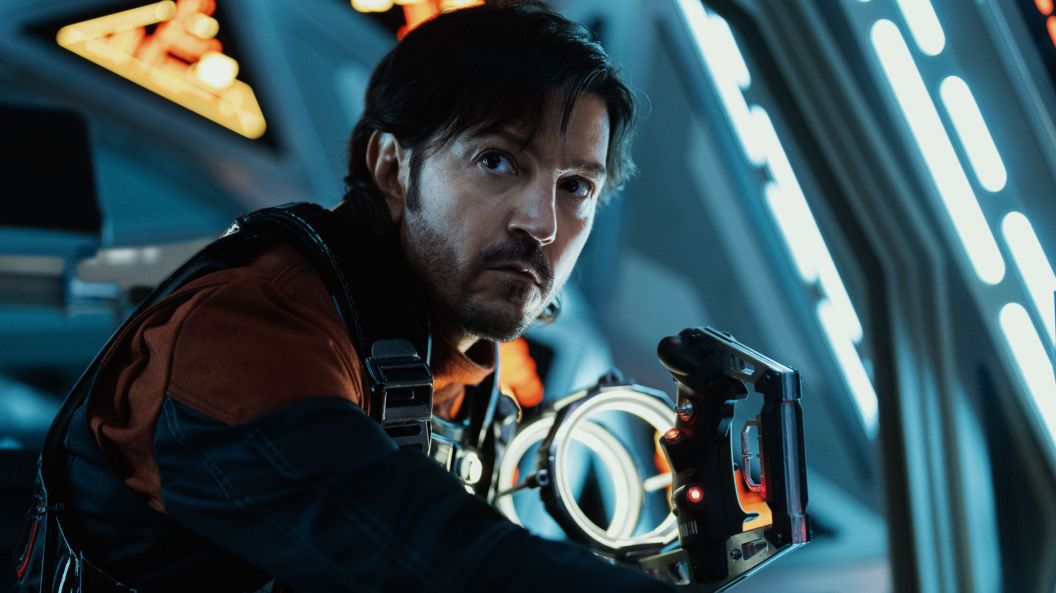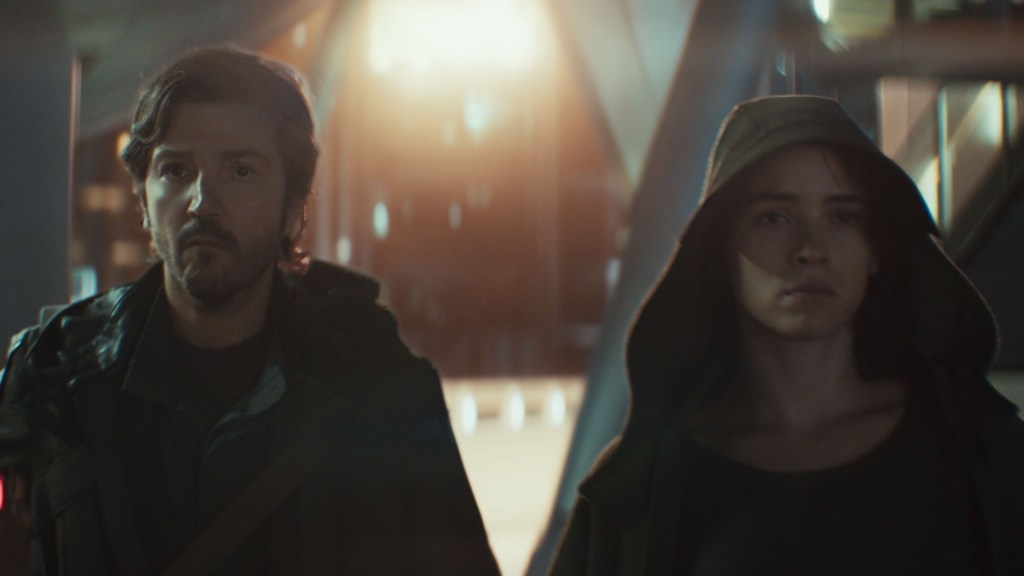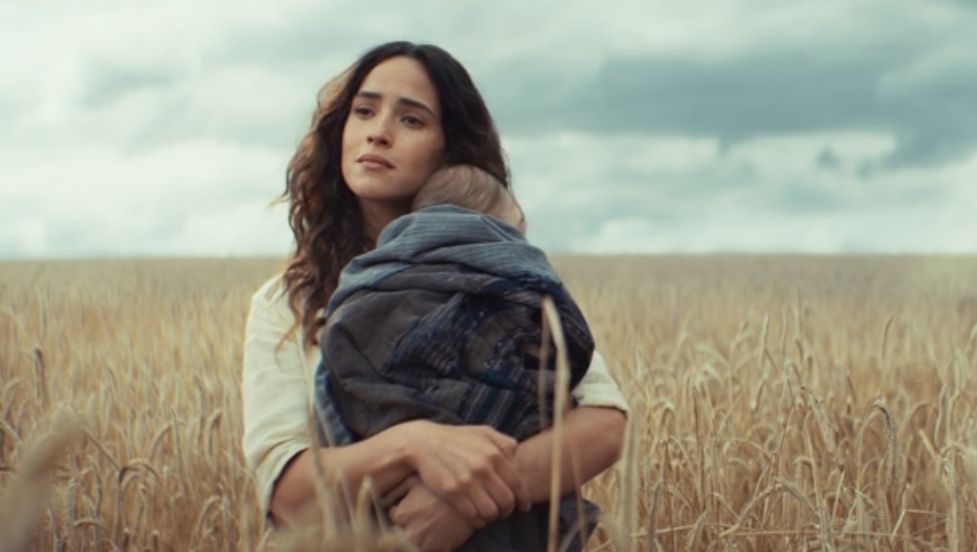
Spoilers for Andor follow. Though Cassian’s story ended with this week’s series finale of Andor on Disney+, the final scene opened up the door for his legacy to live on long past his death in Rogue One: A Star Wars Story. In the closing moments of Episode 12 — “Jedha, Kyber, Erso” — it is revealed that Bix was pregnant after she left Yavin for the sake of the Rebellion, as she is seen holding her and Cassian’s infant child in the fields of Mina-Rau. The revelation ends the series with a glimmer of hope in the middle of war, suffering, and the ultimate sacrifice Cassian unknowingly departs Yavin to face on Scarif. After all, rebellions are built on hope.
The introduction of Cassian’s child in the closing moments of the finale of Andor has major implications for the future of the Star Wars galaxy as a whole, offering a fresh perspective on the legacy of the Rebellion and the personal costs of freedom.
The Existence of Cassian’s Child Opens New Avenues for Star Wars

One of the most immediate implications of the surprising reveal that Bix had given birth to Cassian’s child is the potential for exploration of their upbringing in a galaxy still gripped by the iron fist of the Empire. Growing up in the shadow of a revolutionary father, and likely raised within the Rebel Alliance, or at least among Rebel sympathizers, this child’s life would be inherently intertwined with the fight for liberation. Would they (and Bix, for that matter) be aware of Cassian’s sacrifice? Would they inherit his rebellious spirit, or would the trauma of war shape them in a different way?
In an interview with EW, showrunner Tony Gilroy addressed the surprise ending, stating, “We wanted to have a final punctuation mark on the whole thing, and we wanted to give you a little bit of hope.” This hope, embodied in the child, directly contrasts with the grim realities of the ongoing conflict and underscores the personal stakes involved.
RELATED: After Andor and Rogue One, This 42-Year-Old Star Wars Question Is Even More Baffling
Furthermore, the child’s existence adds a layer of emotional depth to Cassian’s ultimate sacrifice in Rogue One. Knowing that he left behind a child, a tangible piece of himself and his love for Bix, amplifies the tragedy of his death. It transforms his final act from a purely selfless contribution to the Rebellion into a sacrifice that also deprived a child of their parent. This newfound context enriches the emotional resonance of Rogue One and provides a poignant lens through which to re-examine the film. The focus on this intimate detail highlights Andor’s commitment to grounding the grand narrative in personal stories.
This New Character Brings a Unique Perspective on the Legacy of the Rebellion

The timeline of the Star Wars saga also presents intriguing possibilities. Given that baby Andor would be quite young during the events of the original trilogy, their direct involvement in those conflicts would no doubt be limited. However, the New Republic era and sequel trilogy, set decades later, offers a significant window for this character to appear. Could they be a figure within the Resistance, carrying on their father’s fight against the First Order? Or might their path lead them down a different, perhaps unexpected, route within the galaxy? Gilroy hinted at the broader implications adding, “It also opens up the idea that the sacrifices that people make have echoes.” This “echo” could very well be the life and choices of Cassian and Bix’s child.
The introduction of the child also opens up avenues for exploring the personal lives and legacies of other Rebel heroes. The focus often remains on the grand scale of the galactic conflict, but the human cost and the personal stories of those involved are equally important. This child represents a tangible link to the sacrifices made by countless individuals during the Rebellion, reminding audiences that heroes are also fathers, mothers, lovers, and friends. Their story could serve as a microcosm of the broader impact of the war on families and future generations.
RELATED: Andor Reveals the Secret Origin of Rogue One’s Most Memorable Line
Moreover, the child’s parentage – the offspring of Cassian Andor, a man from the Outer Rim who rose to become a pivotal figure in the Rebellion, and Bix Caleen, a resourceful and resilient information broker – suggests a unique blend of skills and perspectives. They might inherit Cassian’s strategic mind and unwavering commitment, combined with Bix’s street smarts and ability to navigate the underworld. This combination could make them a formidable individual in their own right, potentially playing a significant role in future galactic events.
The potential, story-wise, extends beyond simply introducing a new character. The existence of Cassian’s child could also influence the way existing characters view his legacy. Key figures in the early Rebellion knew Cassian and understood the weight of his contributions. Mon Mothma and Kleya, in particular, were intimately aware of Cassian’s bravery and devotion to the Rebellion, as he was the one responsible for extracting both of them from live-or-death scenarios on Coruscant. The knowledge that he left behind a child could further solidify their commitment to the cause he died for, adding another layer of personal motivation to their fight against tyranny.

The child’s discovery of their parentage could be a significant plot point in future stories. Imagine a scenario where they stumble upon old recordings, journals, or even meet individuals who knew their father. This journey of discovery could lead them to embrace their father’s legacy, perhaps even taking up his mantle in some form. It could also lead to internal conflict as they grapple with the weight of his sacrifice and the expectations that come with being the child of a hero; a thread the sequel trilogy never fully explored with Ben Solo/Kylo Ren.
The circumstances surrounding the birth of Cassian and Bix’s child bear a striking resemblance to the revelation of Hera Syndulla and Kanan Jarrus’ son, Jacen Syndulla, in the epilogue of Star Wars Rebels. Both children were conceived amidst the early rebellion and born after the fathers had made the ultimate sacrifice, unaware of the life they had left behind. This parallel in their origins – born into a galaxy at war, carrying the legacy of heroic parents who fought for freedom – suggests a compelling possibility. Should these two children ever cross paths in the vastness of the Star Wars galaxy, their shared history and potential understanding of loss and resilience could forge a powerful connection, perhaps even shaping the future of whatever conflicts may arise.
The Star Wars galaxy is vast and filled with untold stories. The introduction of Cassian’s child provides a new thread to explore, one that is deeply rooted in the events of Andor and Rogue One. It offers a chance to move beyond familiar Skywalker storylines and delve into the lasting impact of the Rebellion on ordinary individuals and their families. This child represents not just a continuation of Cassian’s bloodline, but also a symbol of the enduring hope that fueled the fight against the Empire. Their story has the potential to enrich the Star Wars saga in profound and meaningful ways, reminding us that even in the darkest of times, life finds a way, and legacies are carried forward. The future of the galaxy may very well be shaped, in part, by the child of the rebel who dared to believe in a better tomorrow.
The post Andor’s Twist Ending Shakes Up the Future of Star Wars appeared first on ComicBook.com.

